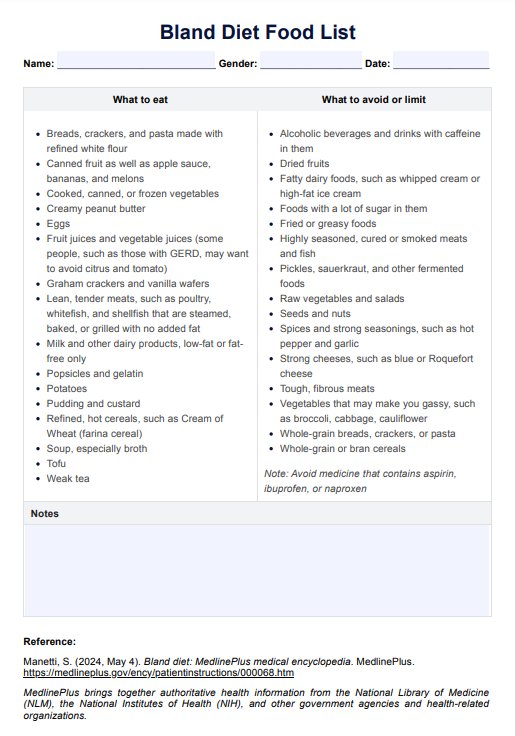Individuals experiencing gastrointestinal issues such as nausea, diarrhea, or vomiting may benefit from following a bland diet. It can also be recommended for those with conditions like gastritis, gastroesophageal reflux disease (GERD), or irritable bowel syndrome (IBS).

Bland diet food list PDF
Use this Bland Diet Food List to guide your clients in managing digestive issues effectively with easy-to-digest, gentle foods. Download this PDF for free!
Bland diet food list PDF Template
Commonly asked questions
Foods commonly included in a bland diet are lean proteins (e.g., skinless chicken, fish), cooked vegetables (e.g., steamed broccoli, boiled carrots), low-fat dairy products (e.g., plain yogurt, skimmed milk), bland carbohydrates (e.g., simple pasta, white rice), and easily digestible fruits (e.g., bananas, applesauce).
Foods to avoid on a bland diet typically include high-fat foods (e.g., fried meats, creamy sauces), spicy or heavily seasoned dishes, caffeine-containing beverages (e.g., coffee, tea), carbonated beverages, alcohol, raw vegetables, high-fiber foods, and processed meats.
EHR and practice management software
Get started for free
*No credit card required
Free
$0/usd
Unlimited clients
Telehealth
1GB of storage
Client portal text
Automated billing and online payments











